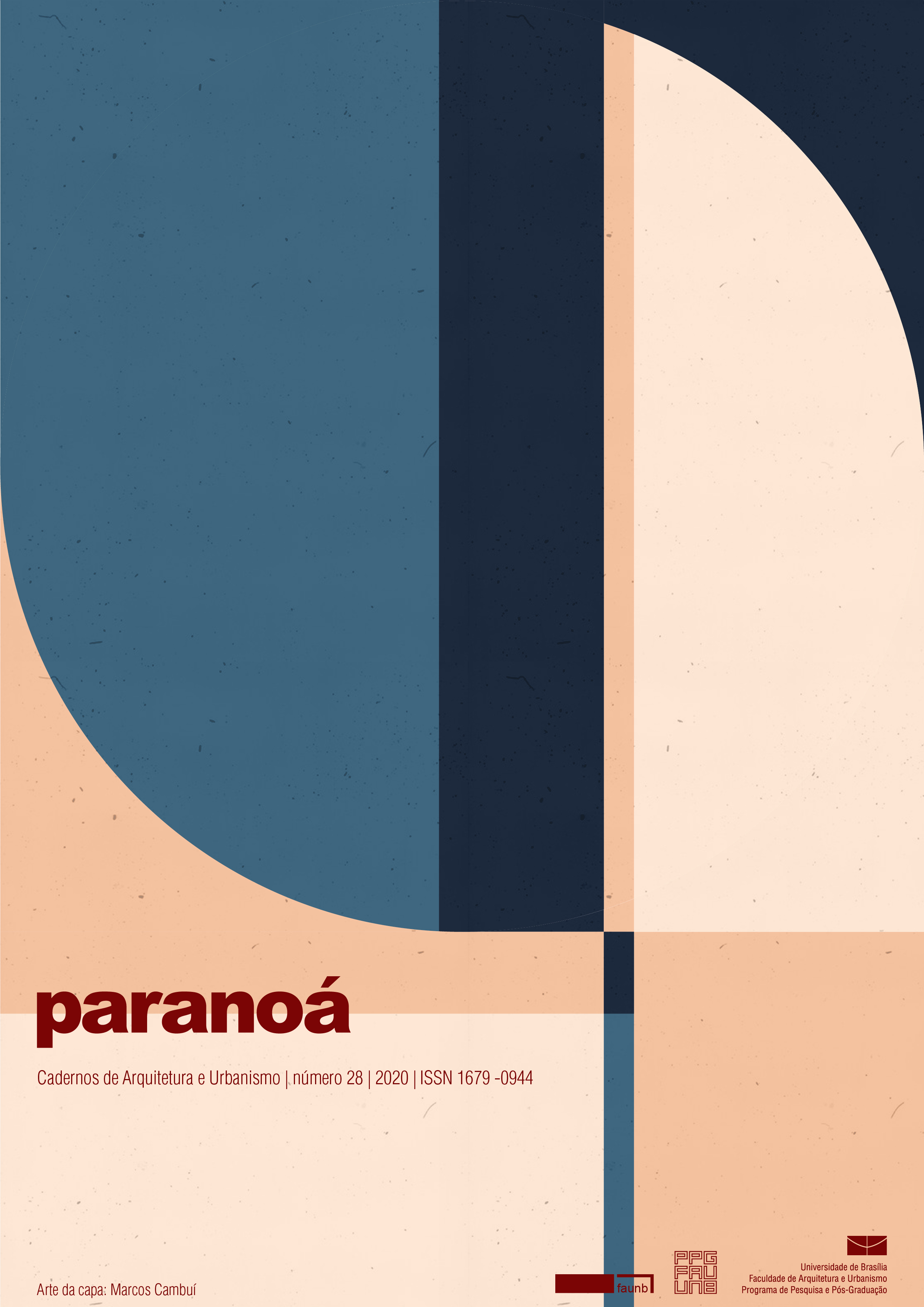Evaluation of the Energy Efficiency of The Court of Auditors of Paraná, in Curitiba
DOI:
https://doi.org/10.18830/issn.1679-0944.n28.2020.06Keywords:
Façade shading elements; RTQ-C; energy efficiency; lighting systems; sustainabilityAbstract
The search for higher energy efficiency in electricity has brought about several worth-mentioning initiatives, in Brazil supported by Procel, with a change in users’ behaviour and conscientization, the labeling of household items including the current struggle towards the rating of buildings in terms of energy efficiency. The present paper is aimed at the evaluation of energy efficiency levels by means of the Brazilian standard “Requisitos Técnicos da Qualidade do Nível de Eficiência Energética para Edifícios Comerciais, de Serviços e Públicos” (RTQ-C/Procel) of the Tribunal de Contas (TC), which is part of the heritage of State Paraná and is located at the Civic Center of Curitiba. The TC is comprised of two buildings: Edifício Sede and Edifício Anexo; a third building is under planning. In Edificio Sede, potential energy saving indicators have been analyzed for the improvement of lighting systems (daylight and artificial lighting). In the extension of Edificio Anexo, the applicability of the facade shading elements was evaluated. Outcomes suggest the TC offers a high potential for energy saving in the lighting system and by implementing the facade shading mesh even higher energy efficiency levels could be reached.
Downloads
References
ABNT. Iluminação de ambientes de trabalho ”“ Parte 1I”“NBR ISO/CIE 8995-1:2013 Rio de Janeiro. 2013.
ABNT. Desempenho Térmico de Edificações ”“ NBR 15220. Rio de Janeiro. 1992.
ASHRAE/IES. Energy efficient design of new buildings except
low-rise residential buildings. ASHRAE/IES 90.1-1989. Illuminating
Engineering Society of North America and American Society of Heating,
Refrigeration and Air-Conditioning Engineers, Inc. Atlanta, The United
States of America, 1989.
BRASIL. Eletrobrás ”“ Procel ”“ Disponível em: http://www.eletrobras.com. 2010. Acessado em: Fevereiro/2012.
BRASIL. Empresa de Pesquisa Energética (EPE)/Ministério Minas e Energia - Balanço Energético Nacional - BEN 2012: Ano base 2011. Rio de Janeiro, 2011. Disponível em https://ben.epe.gov.br/. Acessado em: abril/2013.
BRASIL. Empresa de Pesquisa Energética (EPE)/Ministério Minas e Energia - Balanço Energético Nacional - BEN 2012: Ano base 2012. Rio de Janeiro, 2012. Disponível em https://ben.epe.gov.br/. Acessado em: abril/2014.
BRASIL Anexo da Portaria n. 372/2010 ”“ Requisitos Técnicos da Qualidade para o Nível de Eficiência Energética de Edifícios Comerciais, de Serviços e Públicos. Rio de Janeiro. 2013a.
BRASIL ”“ Procel Info ”“ Centro Brasileiro de Informação de Eficiência Energética. Etiquetagem em Edifícios. (2013b). Disponível em: http://www.procelinfo.com.br/ Acessado em: Novembro/2013.
CARLO, J.C.; LAMBERTS, R. Parâmetros e métodos adotados no regulamento de etiquetagem da eficiência energética de edifícios ”“ parte 1: método prescritivo. Ambiente Construído, Porto Alegre, v. 10, n. 2, p. 7-26, abr./jun. 2010.
FONSECA, I. C. L. da; ALMEIDA, C. C. da R. de; LOMARDO, L. L. B.; MELLO, E. N. Avaliações de conforto ambiental e eficiência energética do projeto do prédio do Centro de Informações do Cresesb, no Rio de Janeiro. Ambiente Construído, Porto Alegre, v. 10, n. 2, p. 41-58, abr./jun. 2010.
FOSSATI, M.; LAMBERTS, R.. Eficiência Energética da Envoltória de Edifícios de Escritórios de Florianópolis: discussões sobre a aplicação do método prescritivo do RTQ-C. Ambiente Construído, Porto Alegre, v. 10, n. 2, p. 59-69, abr./jun. 2010.
GELLER, H. S. Revolução Energética: Políticas para um futuro sustentável. Rio de Janeiro: Relume Dumará: USAid, 2003.
KRÜGER, E.L.; MORI, F. Analise da eficiência energética da envoltória de um projeto padrão de uma agencia bancaria em diferentes zonas bioclimáticas brasileiras. Ambiente Construído, Porto Alegre, v. 12, n. 3, p. 89-106, jul./set. 2012.
LAMBERTS, R.; DUTRA, L.; PEREIRA, F. O. R. Eficiência Energética na Arquitetura. PW Editores. São Paulo. 1997.
SILVA, C. J.; SOUZA, J. A.; CANTARINO, M.; MARTINS, C.C.;MACEDO, L.M.; SILVEIRA, M.T.M.; Código Legislativo da Eficiência Energética nos prédio públicos federais. Eletrobrás e Procel EPP ”“ Rio de Janeiro ”“ 2008.
TRIBUNAL DE CONTAS DO PARANÁ. Acervo técnico. Janeiro/2012.
Downloads
Published
How to Cite
Issue
Section
License
Copyright (c) 2020 Paranoá: journal of Architecture and Urbanism

This work is licensed under a Creative Commons Attribution 4.0 International License.
Autores que publicam nesta revista concordam com os seguintes termos:
- Autores mantém os direitos autorais e concedem à revista o direito de primeira publicação, com o trabalho simultaneamente licenciado sob a Licença Creative Commons Attribution que permite o compartilhamento do trabalho com reconhecimento da autoria e publicação inicial nesta revista. http://creativecommons.org/licenses/by/4.0
- Autores têm autorização para assumir contratos adicionais separadamente, para distribuição não-exclusiva da versão do trabalho publicada nesta revista (ex.: publicar em repositório institucional ou como capítulo de livro), com reconhecimento de autoria e publicação inicial nesta revista.
- Autores têm permissão e são estimulados a publicar e distribuir seu trabalho online (ex.: em repositórios institucionais ou na sua página pessoal) a qualquer ponto antes ou durante o processo editorial, já que isso pode gerar alterações produtivas, bem como aumentar o impacto e a citação do trabalho publicado (Veja O Efeito do Acesso Livre).















